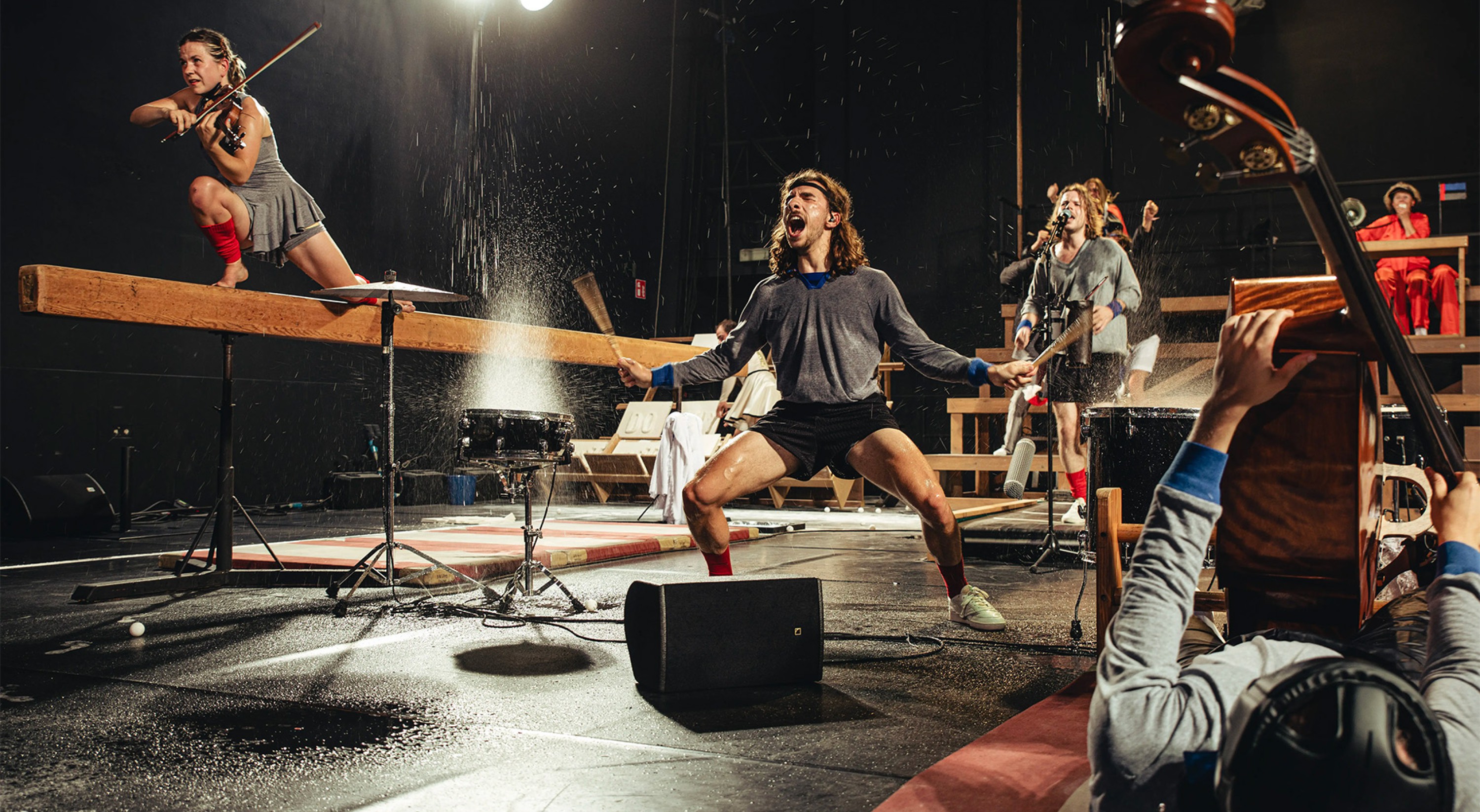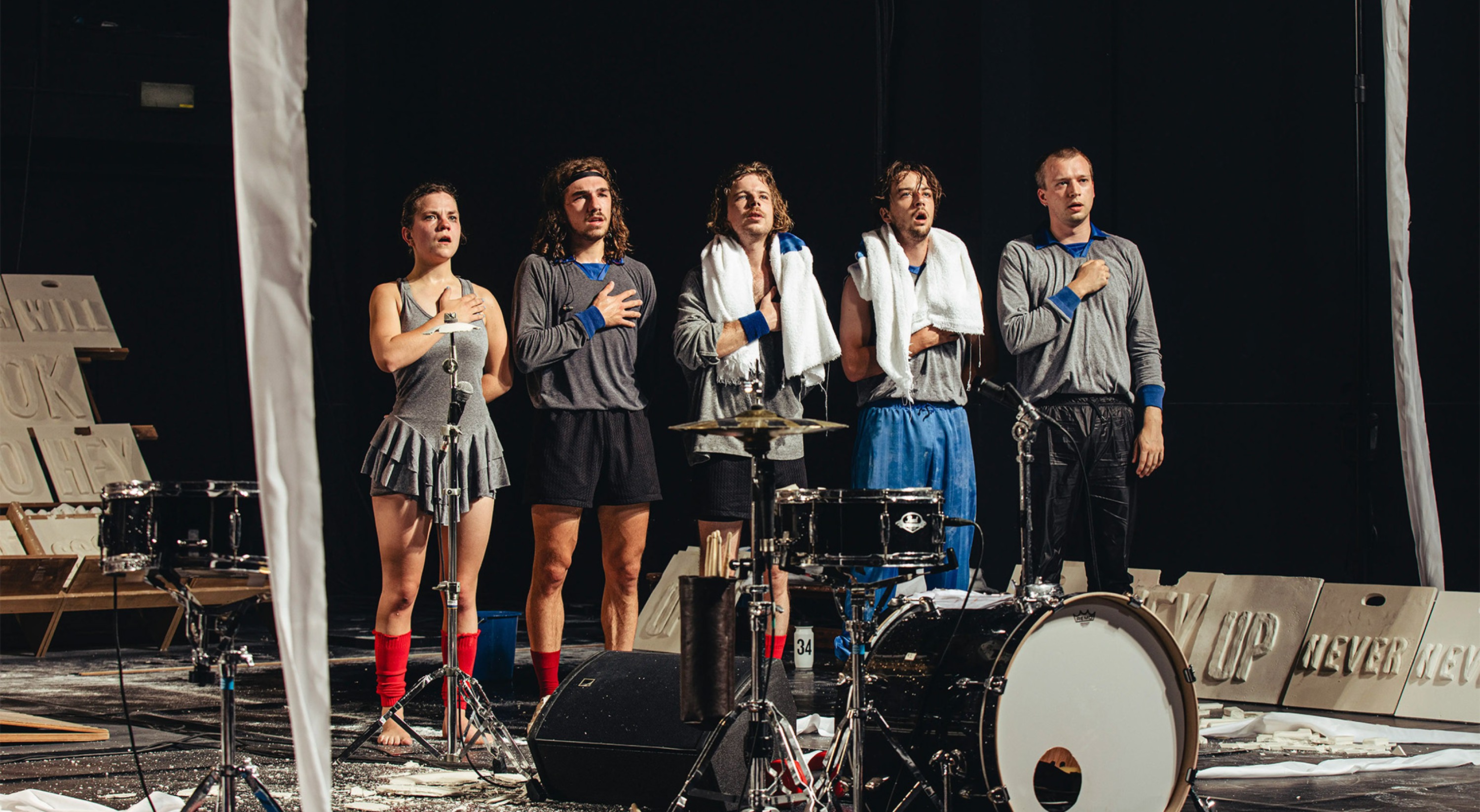Miet Warlop
One Song Histoire(s) du Théâtre IV
septembersept 12 - october – oct 12
januaryjan 25 – 26
Concept, director and set design, Miet Warlop
With Simon Beeckaert, Elisabeth Klinck, Willem Lenaerts/Gilles Vandecaveye-Pinoy, Milan Schudel, Melvin Slabbinck, Joppe Tanghe, Karin Tanghe, Wietse Tanghe, Stanislas Bruynseels, Rint Dens †, Judith Engelen, Marius Lefever, Luka Mariën, Flora Van Canneyt, Max Colonne
Music, Maarten Van Cauwenberghe with the whole band
Text, Miet Warlop advised by Jeroen Olyslaegers
Costume design, Carol Piron & Filles à Papa
Dramaturgy, Giacomo Bisordi
Produced by NTGent; Miet Warlop / Irene Wool vzw
Coproduced by Festival d'Avignon; deSingel (Antwerp); TANDEM Scène nationale (Douai-Arras); Théâtre Dijon Bourgogne Centre Dramatique National; HAU Hebbel am Ufer Berlin; La Comédie de Valence - Centre Dramatique National Drôme – Ardèche; Teatre Lliure (Barcelone)
The Théâtre du Rond-Point and the Festival d’Automne à Paris present this performance in co-production.
In partnership with France Inter
A song, the same one, is repeated over and over again in a trance which makes us laugh and transfixes us. Between athletic performance, ritual and punk concert, the Flemish visual artist and choreographer Miet Warlop orchestrates an attempted exhaustion of sadness.
One Song has two birth certificates. There is the proposition that Milo Rau made to Miet Warlop to explore her relationship to theatre in a forth part of the Histoire(s) du Théâtre series, set in motion by the director in 2018. And there is the piece Sportband/Afgetrainde Klanke, conjured up in 2005 as a requiem for her deceased brother, a conjuration of the sadness that Miet Warlop has chosen to reinvent here in light of the time which has gone by and to make a piece of work out of it. One Song takes the form of a loop which unwinds in an infinite number of variations, a concert which has been designed as an obstacle race. Each to their own: the singer has to run on a conveyor belt in order to maintain the right distance with the microphone, the violinist plays whilst balancing on a beam, and the pianist is condemned to bouncing up and down… all of whom are under the control of the metronome, and the encouragements of a cheerleader and a commentator. Each of them strives to make this song exist, resulting in an electric shock-like performance, the rousing nature of which short-circuits grieving and provides sustenance for the solidarity of bodies and energies. The piece becomes the affirmation of a community via the pushing of oneself to our limits.
See also


